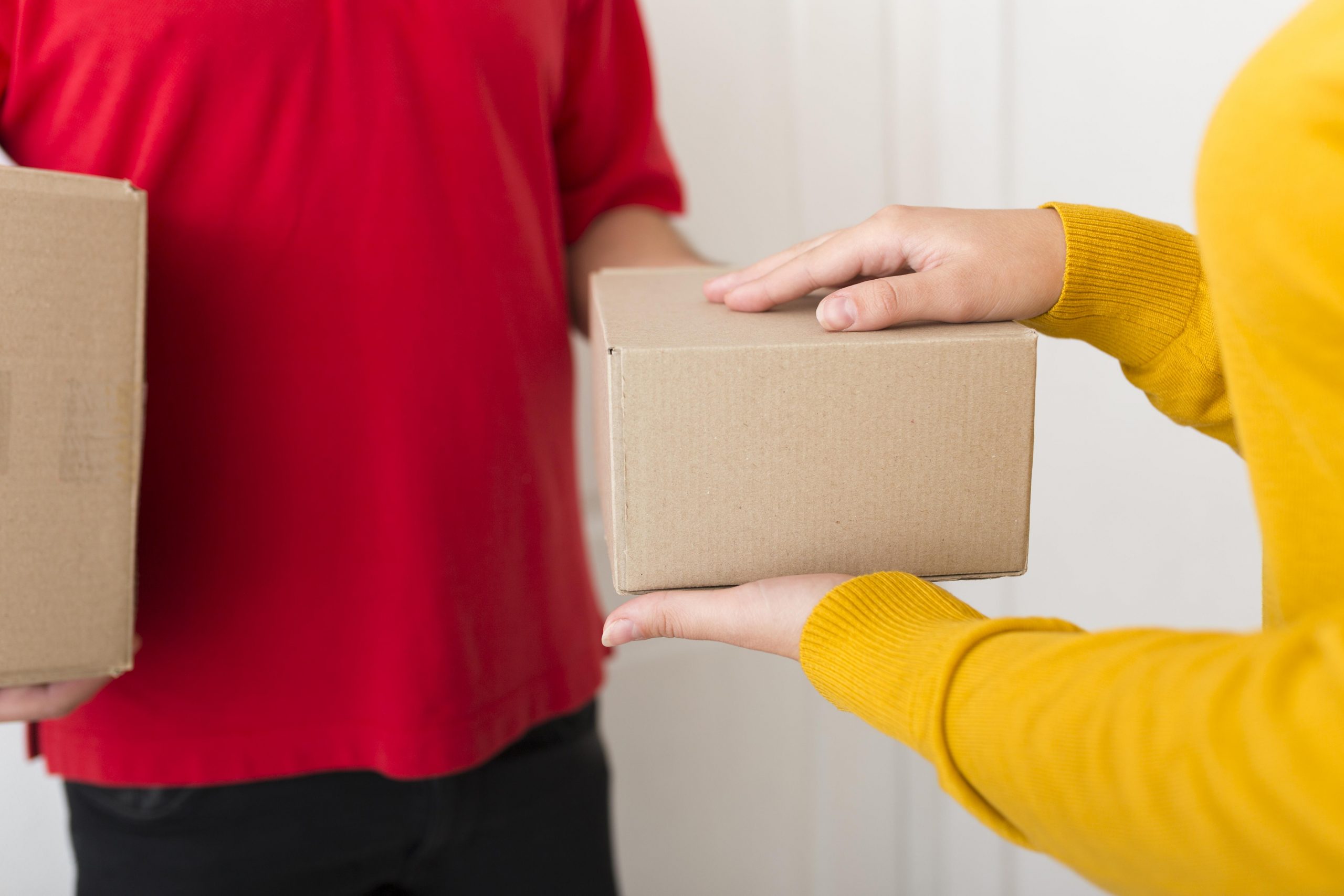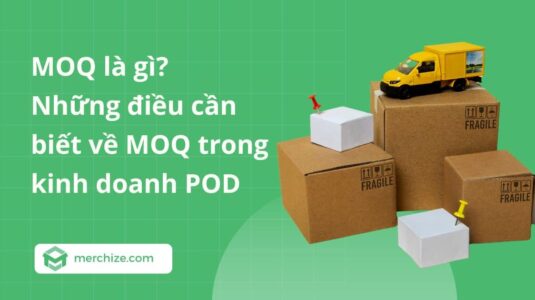Nowadays, “shipping” and “delivery” are quite popular and are rising in e-commerce. Some shoppers are confused between 2 terms, but in reality, they have different meanings.
Whether you are an online shopper or just a retailer, it’s quite necessary to understand two terms correctly. As a retailer, you should be clear about explaining to your customers as soon as possible when they have a question about it. That helps you increase the user experience and also avoid complaints and unhappy behavior.
Let’s explore the details below if you want to know more about “ shipping” and “delivery” terms.
I. Shipping
Below is some information about the term “shipping” term.
1.1. Definition
In general, shipping is one of the processes of the logistics industry. The “shipping” term refers to the process when an order or items have left the warehouse of the supplier and an already further process for sending the customer. This process also involved loading goods onto vehicles or other types of transport. These orders and items will be transported to a distribution center and then unloaded.
This process is quite complex and includes various tasks like picking, packing products, arranging transport, and ensuring timely deliveries. You need to choose the right types of transportation for every kind of goods.
1.2. Types of shipping
Shipping has many types of methods. Below we just list some outstanding ones:
- Standard ground shipping: This is the most economical option method, but it has a longer delivery timeline. This method uses trucks to transport by land. It has a cost-effective shipping method, however, the time of shipping is quite long compared to other methods.
- Expedited shipping: With this method, the time of shipping is the faster shipping option than standard ones. It often takes a few working days, but the cost is higher than ever.
- Overnight shipping: Compared to expedited shipping, the price of these methods is quite higher. The time of shipping typically occurs the next working day. Your customers will receive their orders after 1-2 days of ordering.
- International shipping: These methods of shipping are used for shipping goods across countries. This method involves additional fees, regulations, and customs clearance requirements. Because it’s cross-bỏder deliveries, the time of shipping is quite long compared to other methods of shipping.
1.3. The process of shipping
The process of shipping is divided into 3 parts: pre-shipment, shipment movement, and delivery.
- Pre-shipment: This process begins with order placement and confirmation. In this process, the customer orders and the seller promptly confirms. The seller moves into the order fulfillment process, where the ordered items are gathered, packaged, and labeled. Then the seller selects a suitable method, taking into account factors such as cost, speed… Furthermore, some necessary documentation like invoices, customs declarations (if any), and bills are also prepared to ensure smooth processing and compliance with regulations.
- Shipment movement: This process starts with the carrier picking up the products. The shipment is then transported via land, air, or sea depending on the selected method and the distance to the destination. For international shipments, customs clearance is quite important, requiring the shipment to be cleared by customs authorities in both the exporting and importing countries. This process may involve extra payment to comply with regulatory requirements.
- Delivery: This process arrives at the destination country’s port, airport… After that, it enters the last-mile delivery stage, where it is transported to its final destination. This could be the customer’s address, a pick-up location, etc. Finally, delivery confirmation is provided by the carrier or seller, notifying the customer that the shipment has been successfully delivered.
II. Delivery
Compared to shipping, delivery is not quite complex. Let’s explore the reasons below:
2.1. Definition
In contrast, delivery often refers to transporting larger products like major appliances and furniture which require installation or a delivery person to the customer’s home.
Compared to shipping, delivery orders are usually bigger than their counterparts. Delivery can occur at a variety of locations like the customer’s home, pick-up location, or commercial address.
2.2. Types of delivery
Below are some outstanding types of delivery:
- Standard delivery: Like shipping methods, standard delivery is a common type of delivery. These items are delivered to the customer’s address within a time frame. The timeframe for delivery is based on the address, it usually takes 2-7 days of working.
- Express delivery: This type of delivery is faster than other delivery methods. It often takes one or two days. With this time of delivery, the price is quite more expensive than others.
- Same-day delivery: Like its name, the customer can receive their products just a few hours after having received orders. The timeframe for delivery often takes at most 24 hours. It is applicable on most days except for festive seasons.
- Overnight delivery: Overnight delivery, also referred to as next-day delivery or one-day shipping, is a fast and reliable shipping option offered by carriers like FedEx, UPS, and DHL. Your package will be delivered to the recipient on the next business day after it’s been shipped.
2.3. The process of delivery
Like the shipping method, the process of delivery has 4 steps:
- Preparation for delivery: Once an order or just shipment arrives at a post office or carrier hub, the preparation for delivery begins. These orders will be picked for the driver for the specific areas. To make your orders efficiently, these orders will be conducted by taking into account the number of deliveries and their respective locations.
- Delivery: When all basic information is completed, the orders have already been delivered. The delivery driver delivers the package to the customer’s address.
- Delivery completion: Delivery completion occurs when the package is successfully delivered to the recipient. If the recipient is available and accepts the package, the driver may obtain a signature as confirmation. However, if the recipient is unavailable or the location is inaccessible, the delivery might be classified as an exception. In such cases, actions may vary based on the carrier’s policy, potentially involving redelivery attempts, leaving a notice for pick-up at a designated location, or contacting the sender for further instructions.
- Delivery Notification: Finally, delivery notification is provided to inform the recipient about the outcome of the delivery. This notification typically includes details such as the time of delivery or any exceptions encountered, ensuring that all parties are informed about the shipment’s status.
III. What are the differences between shipping and delivery?
Two terms “shipping” and “delivery” sound similar. Some people both online shoppers and retailers, sometimes confuse them, but in real life, they are different. The shipping process has quite many steps including packing, preparing, and sending small items for delivery as soon as possible and also efficiently through the postal service.
By the way, delivery refers to transporting some larger products such as appliances, and electronics… from the warehouse to the customer. Below is a quick comparison table between 2 of them. This table will help you understand better the difference between “shipping” and “delivery”!
| Feature | Shipping | Delivery |
| Who initiates? | Seller initiates the process | Seller or Buyer can initiate |
| Focus | Moving the item from seller to buyer | Getting the item to the final destination |
| Cost | Usually paid by buyer | Can be paid by buyer or seller |
| Responsibility | The seller is responsible until delivery | Seller’s responsibility ends at drop-off |
| Tracking | Often available, the seller provides info | May or may not be available |
| Delivery options | Limited based on carrier | More flexible, can include in-person etc. |
| Delivery Timeframe | Estimated timeframe provided by seller | Varies depending on the buyer’s preference |
| Package size | Usually small items for shipping through local postal or delivery service | Large items that require delivery personal |
3.1. Who initiates?
The process of shipping is typically initiated by the seller. This means that once an order is placed, it is the seller’s responsibility to prepare the item for transit for its shipment to the buyer. This involves packaging the item securely, labeling it appropriately, and handing it over to the shipping carrier.
In contrast, the delivery process can be initiated by either the seller or the buyer. In cases where the seller initiates delivery, they continue to manage the item’s journey until it reaches the buyer’s specified address. When the buyer initiates delivery, such as through a third-party service, the buyer has more control over how and when the item is delivered.
3.2. Focus
Shipping primarily involves moving the item from the seller to the buyer, including the broader journey from one location to another. This can include international and long-distance transit and is often concerned with getting the item to a regional hub or local distribution center.
On the other hand, delivery focuses on getting the item to its final destination, which is usually the buyer’s residence or business. This final address is crucial, as it ensures the item is handed over directly to the buyer or left in a secure location as per the buyer’s instructions.
3.3. Cost responsibility
When it comes to cost, shipping is usually paid for by the buyer. This cost is often included in the purchase price or added as a separate shipping fee during checkout.
The cost of delivery, however, can be more flexible. It can be covered by either the buyer or the seller, depending on the agreement made during the transaction.
3.4. Responsibility and risk
The seller holds responsibility for the item until it reaches the delivery point. This means that the seller is liable for any loss, damage, or issues that occur during shipping.
However, once the item is dropped off at the delivery location, the seller’s responsibility ends. This shift in responsibility means that the risk associated with transit and handling is transferred from the seller to the buyer at the point of delivery.
3.5. Tracking availability
Tracking availability is a key feature of shipping, with sellers often providing tracking information that allows buyers to monitor the progress of their shipment. This transparency helps buyers stay informed about the status and expected arrival of their purchase.
In contrast, delivery may not always offer tracking options. When tracking is available for delivery, it often includes updates on the final step of the journey.
3.6. Delivery options
Shipping options are typically limited by the carrier used by the seller. These options might include standard, expedited, or overnight shipping, but the choices are constrained by the services offered by the shipping company.
Delivery options, however, are more flexible. They can include in-person delivery, curbside pickup, or delivery to a secure locker, providing more convenience and customization based on the buyer’s needs and preferences.
3.7. Delivery timeframes
The timeframe for shipping is usually estimated and provided by the seller. These estimates are based on the shipping carrier’s schedules and the distance the item needs to travel.
Delivery timeframes, on the other hand, can vary significantly depending on the buyer’s preferences. Buyers may choose specific delivery windows or expedited services to receive their items faster, which can greatly influence the actual delivery time.
3.8. Package sizes and handling
Shipping generally handles small to medium-sized items that can be easily managed by local postal or delivery services. These items are often packed in standard boxes or envelopes and do not require special handling.
Delivery, in contrast, often involves larger items that require more careful handling and sometimes specialized delivery personnel. Examples include furniture, large appliances, or bulk orders, which necessitate a more coordinated delivery approach to ensure safe and efficient transport to the final destination.








